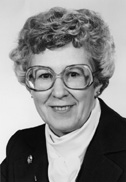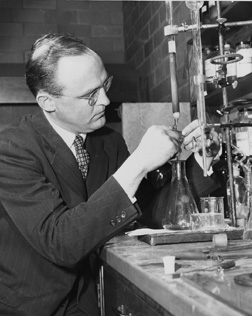![[NEWS AND FACTS BANNER]](/URClipArt/news/titleNewsFactswide.jpg) |
||||||||||||||||

|
||||||||||||||||

A Legacy of LeadershipRochester has a long history of generating some of the leading ideas in a wide variety of disciplines.
When he first had the idea to summarize some of Rochester's major intellectual contributions over its initial 150 years, Provost Charles E. Phelps knew there were plenty of examples to choose from when it came to scholarly leadership. "That's what great universities do-create great ideas," Phelps says. "But what's remarkable about Rochester is that the paradigm-shifting ideas that have been produced here span the spectrum of human thought, through the sciences, engineering, social sciences, and the humanities." That spectrum was given full display in the 2000 book, Transforming Ideas: Selected Profiles in University of Rochester Research and Scholarship, coedited by Phelps and published by the University of Rochester Press. The 19 essays profile scholars and scientists whose work has transformed the way their fields are studied. This fall, in conjunction with the College's Meliora Weekend, October 11-13, the Department of Rare Books, Special Collections and Preservation is planning an exhibition devoted to some of the College's scholarly leaders. The exhibition will be on display in the Great Hall of the library. Here, drawn from Transforming Ideas, is a small sample of University scholars whose work continues to resonate in their fields today.
|
||||||||||||||||
 |
| Ford |
One of the founders of the nurse-practitioner movement, Loretta (Lee) Ford became the first dean of the School of Nursing in 1972.
The former Air Force nurse knew the kinds of contributions nurses were capable of, and she set out to create a curriculum that would combine aspects of both clinical care and research. The result was new status-and a new career ladder-for nurses as well as a new, well-trained cadre of health care professionals.
Her strategy, she later said, was to "improve patient care by improving nurses' education as competent, confident, compassionate practitioners and scholars, skilled in clinical decision making and in investigating outcomes."
'School of Organic Synthesis'
 |
| Gates |
All synthesis starts with an idea, according to Marshall Gates, who at age 35 had a remarkable one: the idea for how to synthesize morphine in a laboratory.
The breakthrough, still considered a masterpiece of organic chemistry, established Rochester as one of the world's leading centers in the field.
And it paved the way, both locally and internationally, for further development of nonaddictive derivatives and an entire approach to synthesizing the complex compounds known as alkaloids.
More Transformers
Some of the other leaders profiled in Transforming Ideas include:
Howard Hanson, founding dean of the Eastman School of Music and leader in establishing an "American School of Classical Music."
George Corner, discoverer of the hormone progesterone.
George Whipple, founding dean of the School of Medicine and Dentistry and Nobel Prize winner for discovering the cure for anemia.
George Engel, founder of the biopsychosocial model of patient care, the notion that each patient's psychological and physical health are intertwined.
T. Franklin Williams, pioneer in the field of geriatrics.
Moshe Lubin, founding director of the Laboratory for Laser Energetics.
William H. Meckling and Michael C. Jensen, leading scholars of the role agency theory plays in corporate decision making.
David Smith, developer of the vaccine for childhood bacterial meningitis.
Jean Johnson, pioneer in the study of the stress of illness.
Leonard Mandel, founding scholar of quantum optics.
Maintained by University Public Relations
Please send your comments and suggestions to:
Rochester Review.
| SEARCH: Directory | Index | Contact | Calendar | News | Giving | |||
